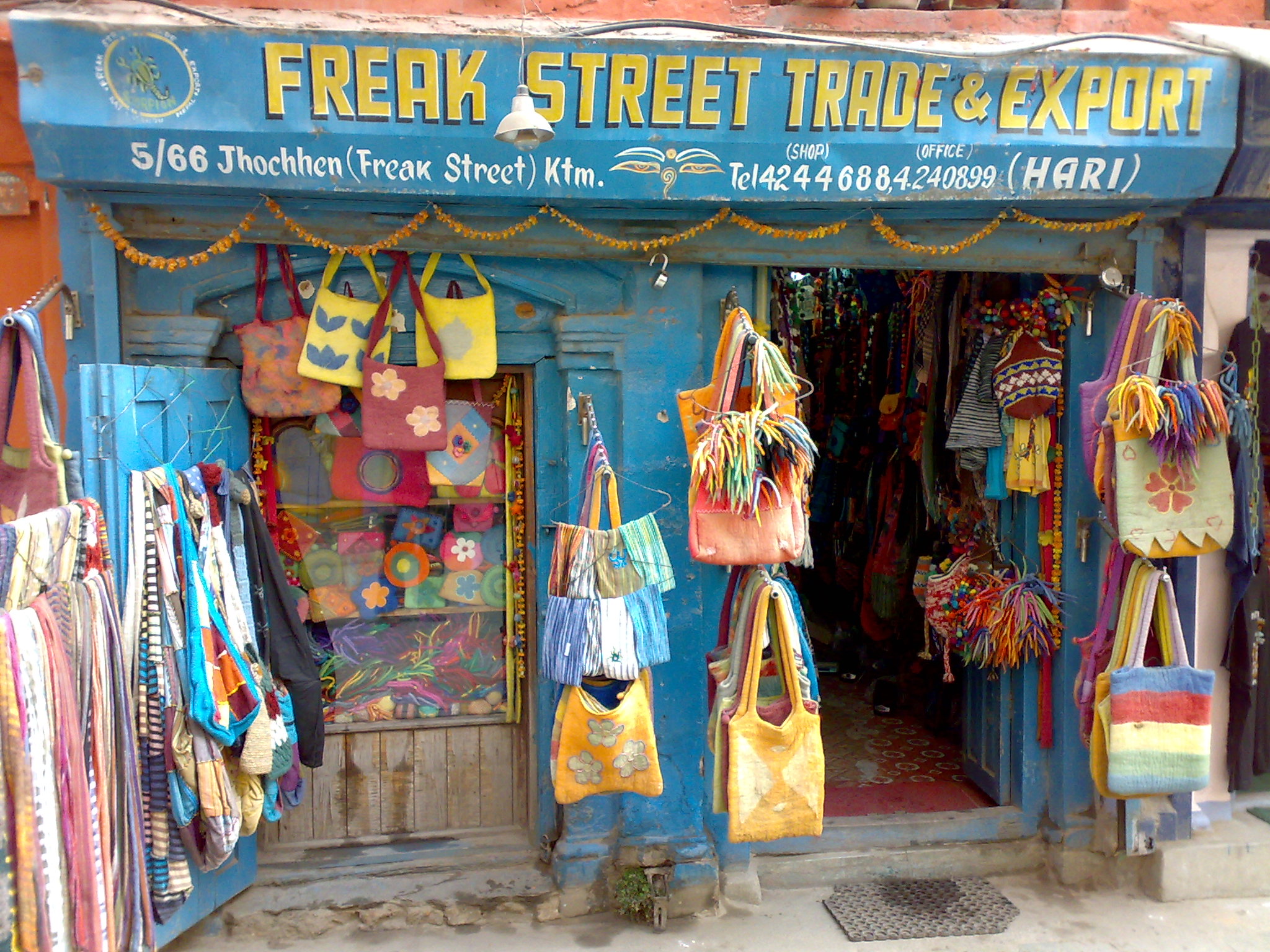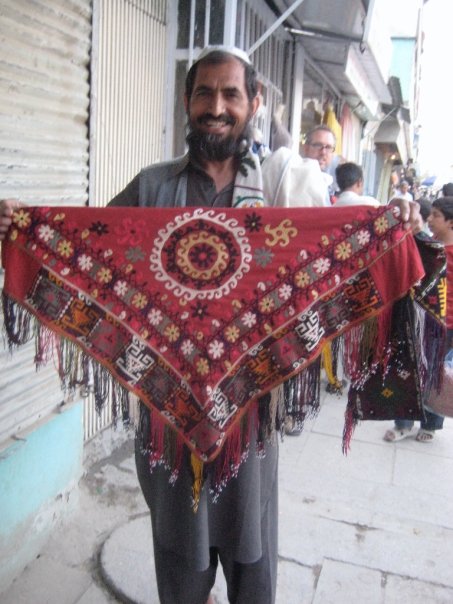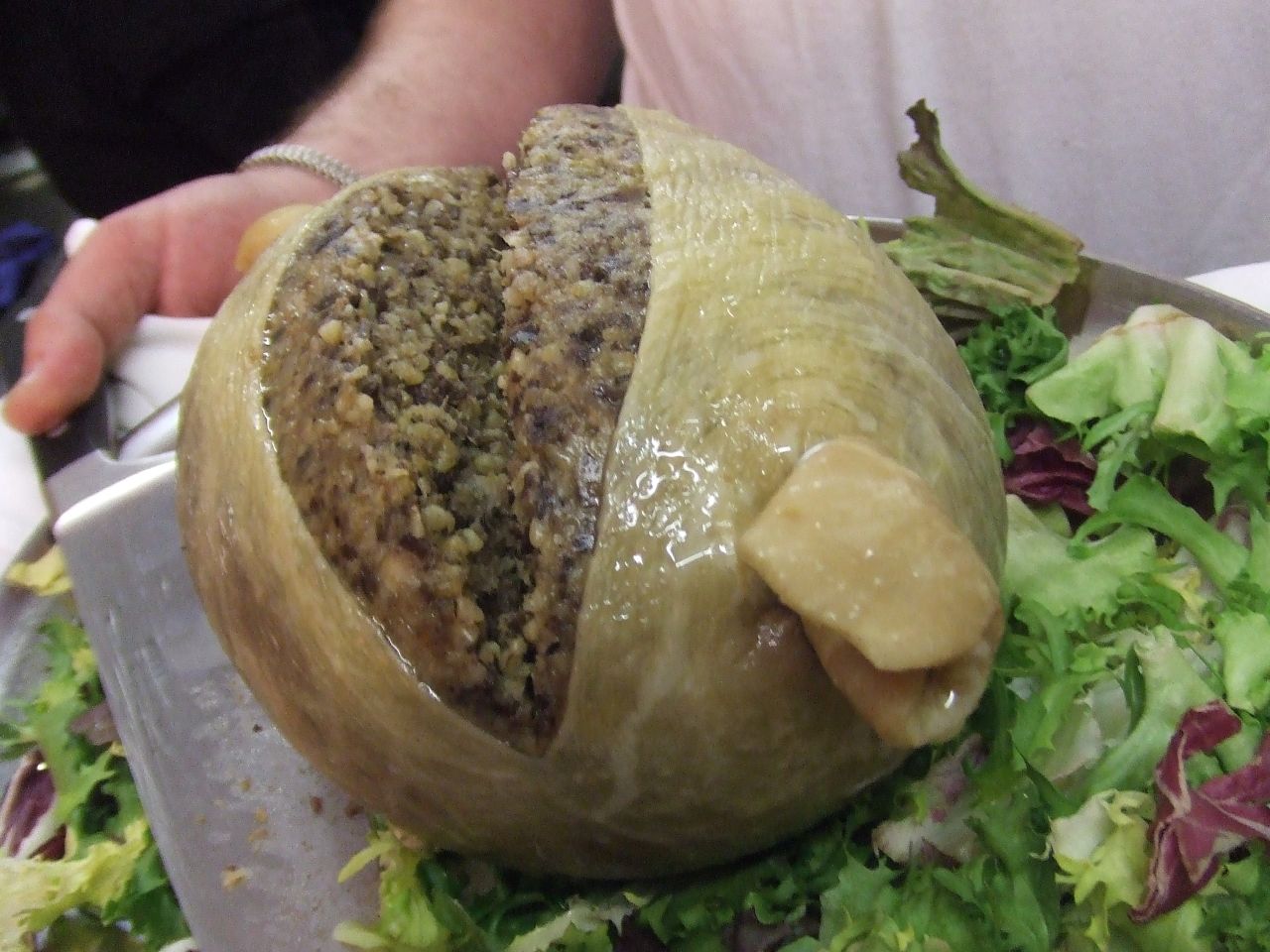|
Pudding Shop
The Pudding Shop is the nickname for the Lale Restaurant in Sultanahmet, Istanbul, Turkey. It became popular in the 1960s as a meeting place for beatniks and, later on, hippies and other travellers on overland route between Europe and India, Nepal, and elsewhere in Asia: the "hippie trail". The restaurant got its colloquial name as a result of "word of mouth" from numerous foreign travellers that could not remember the name of the restaurant but did remember the wide and popular selection of puddings sold there and thus referred to it as the "pudding shop".Hewton, Terry. "Pining for past pudding in Istanbul" ''The Advertiser'' 18 March 1998:1-3. Retrieved viLexis Nexis 23 January 2008. Background Brothers İdris and Namık Çolpan opened the restaurant in 1957. Later, most of its customers were tourists, the Pudding Shop eventually developed into a popular rest stop, a place where people could gather, discuss their travelling experiences, and delight in fairly priced, traditiona ... [...More Info...] [...Related Items...] OR: [Wikipedia] [Google] [Baidu] |
The Pudding Shop 1982 And 2012 - 50449732222 (cropped) 1982
''The'' () is a grammatical article in English, denoting persons or things that are already or about to be mentioned, under discussion, implied or otherwise presumed familiar to listeners, readers, or speakers. It is the definite article in English. ''The'' is the most frequently used word in the English language; studies and analyses of texts have found it to account for seven percent of all printed English-language words. It is derived from gendered articles in Old English which combined in Middle English and now has a single form used with nouns of any gender. The word can be used with both singular and plural nouns, and with a noun that starts with any letter. This is different from many other languages, which have different forms of the definite article for different genders or numbers. Pronunciation In most dialects, "the" is pronounced as (with the voiced dental fricative followed by a schwa) when followed by a consonant sound, and as (homophone of the archaic pr ... [...More Info...] [...Related Items...] OR: [Wikipedia] [Google] [Baidu] |
Sultan Ahmed Mosque
The Blue Mosque in Istanbul, also known by its official name, the Sultan Ahmed Mosque ( tr, Sultan Ahmet Camii), is an Ottoman-era historical imperial mosque located in Istanbul, Turkey. A functioning mosque, it also attracts large numbers of tourist visitors. It was constructed between 1609 and 1616 during the rule of Ahmed I. Its Külliye contains Ahmed's tomb, a madrasah and a hospice. Hand-painted blue tiles adorn the mosque’s interior walls, and at night the mosque is bathed in blue as lights frame the mosque’s five main domes, six minarets and eight secondary domes. It sits next to the Hagia Sophia, the principal mosque of Istanbul until the Blue Mosque's construction and another popular tourist site. The Blue Mosque was included in the UNESCO World Heritage Site list in 1985 under the name of "Historic Areas of Istanbul". History After the Peace of Zsitvatorok and the crushing loss in the 1603–18 war with Persia, Sultan Ahmed I decided to build a large mosqu ... [...More Info...] [...Related Items...] OR: [Wikipedia] [Google] [Baidu] |
Fatih
Fatih () is a district of and a municipality (''belediye'') in Istanbul, Turkey, and home to almost all of the provincial authorities (including the governor's office, police headquarters, metropolitan municipality and tax office) but not the courthouse. It encompasses the peninsula coinciding with old Constantinople. In 2009, the district of Eminönü, which had been a separate municipality located at the tip of the peninsula, was once again remerged into Fatih because of its small population. Fatih is bordered by the Golden Horn to the north and the Sea of Marmara to the south, while the Western border is demarked by the Theodosian wall and the east by the Bosphorus Strait. History Byzantine era Historic Byzantine districts encompassed by present-day Fatih include: ''Exokiónion'', ''Aurelianae'', ''Xerólophos'', '' ta Eleuthérou'', ''Helenianae'', ''ta Dalmatoú'', ''Sígma'', '' Psamátheia'', ''ta Katakalón'', ''Paradeísion'', ''ta Olympíou'', ''ta Kýrou'', '' ... [...More Info...] [...Related Items...] OR: [Wikipedia] [Google] [Baidu] |
Hippie Movement
The hippie subculture began its development as a youth movement in the United States during the early 1960s and then developed around the world. Its origins may be traced to European social movements in the 19th and early 20th century such as Bohemians, with influence from Eastern religion and spirituality. It is directly influenced and inspired by the Beat Generation, and American involvement in the Vietnam War. From around 1967, its fundamental ethos — including harmony with nature, communal living, artistic experimentation particularly in music, sexual experimentation, and the widespread use of recreational drugs — spread around the world during the counterculture of the 1960s, which has become closely associated with the subculture. Precursors Classical culture The hippie movement has found historical precedents as far back as the Mazdakist movement in Persia, whose leader the Persian reformer Mazdak, advocated communal living, the sharing of resources, vegetarianism, ... [...More Info...] [...Related Items...] OR: [Wikipedia] [Google] [Baidu] |
Restaurants In Istanbul
A restaurant is a business that prepares and serves food and drinks to customers. Meals are generally served and eaten on the premises, but many restaurants also offer take-out and food delivery services. Restaurants vary greatly in appearance and offerings, including a wide variety of cuisines and service models ranging from inexpensive fast-food restaurants and cafeterias to mid-priced family restaurants, to high-priced luxury establishments. Etymology The word derives from early 19th century from French word 'provide food for', literally 'restore to a former state' and, being the present participle of the verb, The term ''restaurant'' may have been used in 1507 as a "restorative beverage", and in correspondence in 1521 to mean 'that which restores the strength, a fortifying food or remedy'. History A public eating establishment similar to a restaurant is mentioned in a 512 BC record from Ancient Egypt. It served only one dish, a plate of cereal, wild fowl, and onion ... [...More Info...] [...Related Items...] OR: [Wikipedia] [Google] [Baidu] |
Freak Street
Jhochhen Tole ( ne, झोछेँ टोल, translit=Jhochhen Tole), popularly known as Old Freak Street, or Freak Street is a small neighbourhood located at the south of Kathmandu Durbar Square. Presently known as Old Freak Street, this ancient street was named Freak Street, referring to the hippie trail of the 1960s and 1970s. History Freak Street was the epicenter during the Hippie trail from the early 1960s to late 1970s. During that time the main attraction drawing tourists to Freak Street was the government-run hashish shops. Hippies from different parts of the world traveled to Freak Street ( Basantapur) in search of legal cannabis. Direct bus services to Freak Street were also available from the airport and borders targeting the hippies looking for legal smokes. Freak Street was a hippie nirvana, since marijuana and hashish were legal and sold openly in government licensed shops. A young restless population in the west, seeking to distance itself from political and soc ... [...More Info...] [...Related Items...] OR: [Wikipedia] [Google] [Baidu] |
Chicken Street
Chicken Street ( prs, کوچه مرغ ''Koch-e Murgha'') is a narrow street located in the Shahr-e Naw district of Kabul east of the Asamayi. It has been an iconic shopping street in the city and popular with foreigners, famous for its carpets, handicrafts and antiques. History Chicken Street was the major attraction for foreigners during the Hippie trail from the 1960s to late 1970s. Afghan coats, bracelets and plenty of hashish made it popular. Hippies would also smoke opium here. Along with hotels, it provided items for the travelers to use en route towards Kathmandu. The street and tourism in general declined with the start of the Soviet–Afghan War. Following the United States invasion of Afghanistan and the influx of foreign diplomats and other visitors, the street was thriving again for it became a popular place for Afghan souvenirs. Traditional Afghan rugs and lapis lazuli stones were popular with shoppers. Emerald, rubies, exotic food and artists selling paintings ar ... [...More Info...] [...Related Items...] OR: [Wikipedia] [Google] [Baidu] |
Midnight Express (film)
''Midnight Express'' is a 1978 prison drama film directed by Alan Parker, produced by David Puttnam and written by Oliver Stone, based on Billy Hayes's 1977 non-fiction book of the same name. The film stars Brad Davis, Irene Miracle, Bo Hopkins, Paolo Bonacelli, Paul L. Smith, Randy Quaid, Norbert Weisser, Peter Jeffrey, and John Hurt. Hayes was a young American student sent to a Turkish prison for trying to smuggle hashish out of the country. The film's title is prison slang for his escape attempt. Upon release, ''Midnight Express'' received generally positive reviews from critics. Many praised Davis's performance as well as the cast, the writing, the direction, and the musical score by Giorgio Moroder. Hayes and others criticized the film for portraying the Turkish prison men as violent and villainous and for deviating too much from the source material. It was later nominated for Best Picture and Best Director for Parker at the 51st Academy Awards in 1979, and won Best ... [...More Info...] [...Related Items...] OR: [Wikipedia] [Google] [Baidu] |
Midnight Express (book)
''Midnight Express'' is a 1977 nonfiction book by Billy Hayes and William Hoffer about Hayes' experience as a young American who was sent to a Turkish prison. The US had declared a "War on Drugs" in the early 1970s, and Hayes was made an example of for trying to smuggle hashish out of Turkey. When his sentence was extended to 30 years, he decided to make his escape. The book was adapted by Oliver Stone and directed by Alan Parker into a 1978 feature film of the same name that took many liberties with the book. After reading the book, Australian country music singer Shane Nicholson recorded an album and title track, ''Bad Machines ''Bad Machines'' is the fourth studio album from Australian country singer Shane Nicholson, released by Liberation Music in Australia in March 2011. The album peaked at number 29 on the ARIA Charts, becoming Nicholson's first solo album to peak ...'', which was inspired by the book. Editions *Dutton, 1977. (First edition) References 197 ... [...More Info...] [...Related Items...] OR: [Wikipedia] [Google] [Baidu] |
Pudding Shop, Istanbul
Pudding is a type of food. It can be either a dessert or a savoury (salty or spicy) dish served as part of the main meal. In the United States, ''pudding'' means a sweet, milk-based dessert similar in consistency to egg-based custards, instant custards or a mousse, often commercially set using cornstarch, gelatin or similar coagulating agent such as Jell-O. The modern American meaning of pudding as dessert has evolved from the original almost exclusive use of the term to describe savoury dishes, specifically those created using a process similar to that used for sausages, in which meat and other ingredients in mostly liquid form are encased and then steamed or boiled to set the contents. In the United Kingdom and some of the Commonwealth countries, the word ''pudding'' is used to describe sweet and savoury dishes. Savoury puddings include Yorkshire pudding, black pudding, suet pudding and steak and kidney pudding. Unless qualified, however, pudding usually means dessert a ... [...More Info...] [...Related Items...] OR: [Wikipedia] [Google] [Baidu] |
Vietnam War
The Vietnam War (also known by #Names, other names) was a conflict in Vietnam, Laos, and Cambodia from 1 November 1955 to the fall of Saigon on 30 April 1975. It was the second of the Indochina Wars and was officially fought between North Vietnam and South Vietnam. The north was supported by the Soviet Union, China, and other communist states, while the south was United States in the Vietnam War, supported by the United States and other anti-communism, anti-communist Free World Military Forces, allies. The war is widely considered to be a Cold War-era proxy war. It lasted almost 20 years, with direct U.S. involvement ending in 1973. The conflict also spilled over into neighboring states, exacerbating the Laotian Civil War and the Cambodian Civil War, which ended with all three countries becoming communist states by 1975. After the French 1954 Geneva Conference, military withdrawal from Indochina in 1954 – following their defeat in the First Indochina War – the Viet Minh to ... [...More Info...] [...Related Items...] OR: [Wikipedia] [Google] [Baidu] |
Hagia Sophia
Hagia Sophia ( 'Holy Wisdom'; ; ; ), officially the Hagia Sophia Grand Mosque ( tr, Ayasofya-i Kebir Cami-i Şerifi), is a mosque and major cultural and historical site in Istanbul, Turkey. The cathedral was originally built as a Greek Orthodox church which lasted from 360 AD until the conquest of Constantinople by the Ottoman Empire in 1453. It served as a mosque until 1935, when it became a museum. In 2020, the site once again became a mosque. The current structure was built by the eastern Roman emperor Justinian I as the Christian cathedral of Constantinople for the state church of the Roman Empire between 532 and 537, and was designed by the Greek geometers Isidore of Miletus and Anthemius of Tralles. It was formally called the Church of the Holy Wisdom () and upon completion became the world's largest interior space and among the first to employ a fully pendentive dome. It is considered the epitome of Byzantine architecture and is said to have "changed the history o ... [...More Info...] [...Related Items...] OR: [Wikipedia] [Google] [Baidu] |
.png)
.jpg)
.jpg)







.jpg)